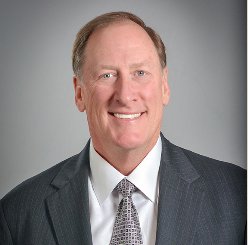
Christopher Leonard back in August 2019 published Kochland after many years of research. The story starts out with Charles Koch in the early 1980's meeting with Morgan Stanley investment bankers to try to talk Koch Industries into going public (and Charles Koch would personally earn $20 million). Of course Charles would understand that if he reinvested the profits back into the company he could grow the company to a point beyond on his wildest dreams (as I write this Charles Koch has a net worth over $42 billion) so it looks like he was wise to pass on that deal from Morgan Stanley.
What is clear is that Mr. Leonard spent a considerable amount of time researching this book and doing honest to goodness journalistic reporting for this book by interviewing many individuals. Even though I have read many books it bothers me when people don't actually do the research and it feels like someone just slabbed something together in a few months. In fact it took 8 years to write Kochland and the author interviewed people for hundreds of hours to get a complete view of Koch Industries. Also I like how the author does each chapter chronically (although at certain points of the book I wished he would pin down the time line of specific events). The book goes back and forth between the political commentary and telling the business story of Koch Industries. Actually, there could be two separate books (one for the political side and one for the business side).
Overall, he gives of Koch Industries a fair assessment of both the positive and negative things the company has done throughout their long tenure. Chris does an extremely great job of taking very complicated subjects and boiling them down to their essence (especially when talking about energy trading and oil markets in general). You can see in his writing that although Chris doesn't agree with what Koch Industries stands for politically however he does admire the company for how they operate their business (focusing on the long term, very analytical, and continuing trying to drive improvement). He gives more meat to the Koch business side instead of just covering the political side. The one thing I don't fault the author for for is Koch Industries not giving more access to Charles Koch. Koch Industries also was aware of the type of reporting from Mr. Leonard as he wrote a piece about Koch for Fortune many years ago. Much of the story around Charles Koch had to be told through secondary sources.
The book tells the story of many interesting characters that worked at Koch Industries over the years. Leonard in the book tells the story of Benard Paulson who busted up the union at Pine Bend (he was hired by Charles Koch to do this). I actually had blogged about Paulson but it was along the lines of him being denied a proposal from the Koch board of directors for trying to rapidly expand the Pine Bend refinery). In the book, Paulson scheduled the union boss to come to work on Easter Sunday. When the union boss didn't show up for work he was fired which started a war between Koch and the union. Leonard goes into great detail about this war as Paulson could find non union members and even members outside the state to come into the Pine Bend refinery to perform the work of the striking union members. Paulson would end of getting a death threat for what he was trying to pull off and sets the narrative between Koch and the unions. What is interesting is Pine Bend refinery generated almost $61 million in after-tax profit (22% of all the profit for Koch Industries in 1981). J Howard Marshall who owned an interest in Pine Bend Refinery would swap his interest for Koch Industries stock and go on to say it would be the best deal he ever did.
Charles Koch comes across in the book as bright, workaholic (Koch would work on weekends and ask employees to come on by down to the office on Sunday afternoon) analytical, but also calm cool and collected even during stressful times. Also it should be pointed out he doesn't pound his fist on the table or demean employees. Steve Feilmeir explains how Charles is calm said in this video "if Charles wigs out it will be behind closed doors and not necessarily in front of anyone". Charles however can ask the key questions to penetrate nonsense to get to the heart of the matter. During the financial crisis when the trading arm for Koch was losing lots of money the trading team was summoned to the Wichita headquarters for a meeting with Charles Koch to decided whether the team would get additional trading capabilities or shut down. Charles asked the trading team if these trading errors were the result of hubris or greed (he remained patient and collected when asking these questions) and if the team could take responsibility for the trades they did make and what would change.
What is interesting is that in 1968 while Charles Koch, Stuart Varner, and a new Koch employee were on the company private plane (I was honestly surprised the company had a private plane this early in their history-the current corporate jet fleet of Koch Industries can be seen here) trying to decide what to call the company (the name at the time was Wood River Oil and Refining Group) the new employee suggested Koch Industries and Charles Koch wasn't wild about it. According to Leonard, in 1961, when Charles was joined Koch Industries the company earned $3.5 million, paid out $150,000 in dividends to shareholders, and only had 300 employees. Using their strategy of plowing 90% of the earnings back into the company by 1981 had the company earned $300 million and paying out $27.5 million of dividends to shareholders (this included Bill Koch at the time) and 7,000 employees. With the continued path of success Koch continued to grow by leaps and bounds. Recently in 2019 the company has $130 billion in revenue and 140,000 employees worldwide, and I estimate $17 billion of pre-tax earnings, and I estimate $900 million in dividends to shareholders. So from 1961-2019 Koch Industries on a compound annual rate increased their earnings by 16%/year (according to my estimates), dividends to shareholders by 16% (my estimation), and employees by 11% compounded annually. Personally I am not aware of many companies in corporate history that have been able to have on average double digit rate of earnings, dividends, for close to six decades!
I feel as if the author left out a few interesting topics that could have been explored further. The first is the Marshall family dynamic and their ownership of Koch Industries. J Howard Marshall II had a large impact on Koch Industries was a 16% shareholder of Koch Industries. Although, J Howard Marshall II was not actively his partnership with Charles Koch led to the company's tremendous growth over many decades. As a passive shareholder J Howard Marshall during the mid 1990's was earning $8 million per year and using the monies to fund his lifestyle, pay down debt (he used Koch Industries stock as collateral), and most importantly shower his favorite lady friends with gifts (including Anna Nicole Smith). Also the battle with Elaine Marshall, Preston Marshall, and E. Pierce Marshall Jr. would definitely add some color to the book.
Also another topic that wasn't covered enough was David Koch and his contributions to Koch Industries. Although, David was an executive vice president at Koch Industries he had a large role in the growth of the company. Even though David didn't live in Wichita he had control of a Koch Division (Koch Chemical Technology which just recently was changed to Koch Engineering Solutions. David was at the Koch division for 48 years and during that time period the subsidiary purchased 50 businesses which helped grow the division by 1,000 fold while growing the number of employees from almost nothing to 5,000 employees. In addition to this I think few are aware that David ran a subsidiary of Koch Industries that actually purified water (David would nerd out on water desalination technology).
Koch Industries is always looking at better ways of doing things-only if it makes sense. The company looks at the return on investment to evaluate projects (Koch Industries Chief Financial Officer Steve Feilmeier has said the company tries to target a rate of return between 12%-15% depending on the risk of the project). The company in general never chased sales, fads, and was weary of debt. Leonard covers the Georgia Pacific deal pretty well, however I wish the ABKO deal was included in the book (I covered this here)-which involved Chrysler dealerships). Koch only put down a fraction of the money required (10%) and was able to earn a good return. I am sure that there are many more deals like this in the Koch history but overall Leonard gives a good example
Leonard rehashes the boardroom battle for Koch Industries with the focus between Charles and Bill and unearths new details including Bill Koch constantly writing memos to Charles (6-10 memos in the month of June 1980). David Koch would say that his twin brother Bill was always writing letters and always asking for additional studies. Charles explained to his younger brother Bill that spending countless hours on additional studies and having to go through several layers of committees/reviews/bureaucracy was not the way to run an organization. Bill who had complained about the dividend policy of Koch Industries didn't agree with Charles that the earnings should be plowed back into the company. In the short run as a shareholder Bill wouldn't have large dividends but with the power of compounding growth over time the shareholders would be better off Ultimately, Bill and oldest Koch brother Frederick would be bought out and in the long run if they had stayed Koch shareholders their net worth and annual dividends would be a large multiple of what they are today as I wrote here.
Even though Leonard discusses the successes that Koch had it also spends time on the failures as well (there is a whole chapter dedicated to the Purina Mills debacle). During the 1990's was a time of massive growth for Koch Industries. However, during this time Koch appeared to be growing just to be growing. The company didn't do any due diligence on Purina Mills which Charles Koch admits in this video.
Overall, the book gives a well researched, full, and full of good stories told throughout the history of Koch Industries. Although, the book comes in at over 700 pages it provides a plethora of information that even people who are familiar with Koch Industries will find interest. It appears the past 10 years have resulted an explosion of books on Koch Industries (Dark Money, Sons of Wichita, Kochland, even Good Profit from Charles Koch himself). In addition to all this, Leonard reveals that Charles Koch is working on another book (I first heard about this a number of years ago when Charles Koch was interviewed on the Bill Bennett radio show). The idea is to apply Koch's management style philosophy to society and this is a "passion project" for Charles. Hopefully the book will be published soon so a review can be written about it. Kochland should stand up the test of time given it's well researched slant and good storytelling approach.








